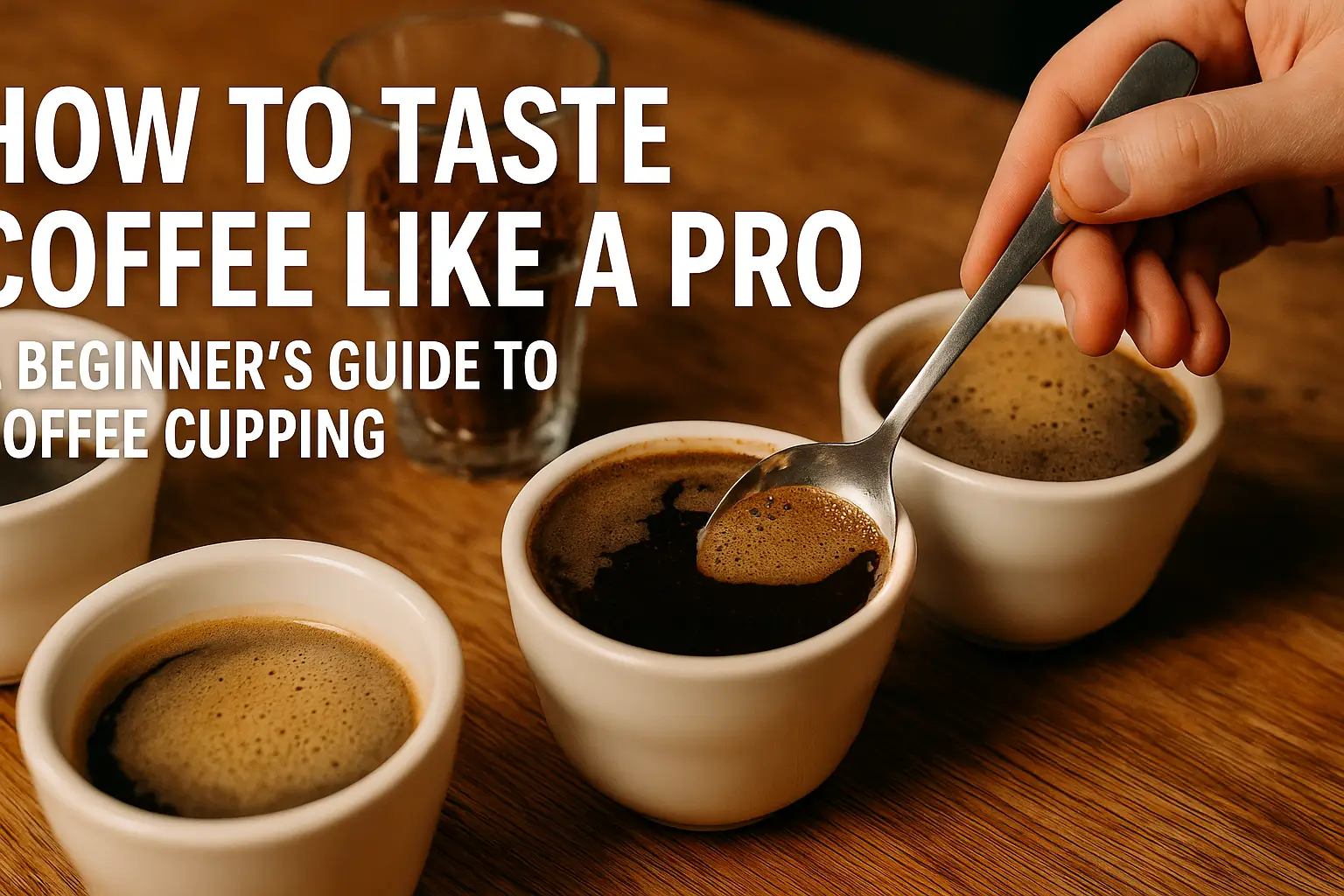Tasting coffee isn’t just about drinking it — it’s about understanding its complexity, appreciating its origins, and developing your palate. Whether you’re a home brewer, a barista-in-training, or just someone who loves coffee, learning how to cup and taste coffee like a professional is both fun and rewarding.
In this beginner-friendly guide, we’ll walk you through the process of tasting coffee like a pro, step by step.
What Is Coffee Cupping?
Coffee cupping is the standard method professionals use to evaluate and compare coffee. It’s designed to assess the aroma, flavor, acidity, body, aftertaste, and more, using a consistent process that levels the playing field.
You don’t need fancy gear to get started — just a few tools and a good nose.
What You’ll Need
- Freshly roasted coffee beans (at least two different origins for comparison)
- Coffee grinder
- Scale
- Kettle
- Filtered water
- Cupping bowls or wide mugs (one per coffee)
- Cupping spoons or soup spoons
- Timer
- Notebook or cupping form
Preparing for the Cupping
1. Grind Your Coffee
Grind each coffee coarse, similar to French press. Use 8.25 grams of coffee per 150 ml (5 oz) of water.
Grind right before cupping for the best aroma and clarity.
2. Smell the Dry Grounds
Before adding water, smell the dry grounds in the bowl. This is called the “dry aroma.”
Ask yourself:
- Is it fruity, nutty, earthy, floral, spicy?
- Does it remind you of anything — chocolate, citrus, herbs?
Write down your first impressions.
The Cupping Process
Step 1: Add Hot Water
- Heat your water to 200°F (93°C)
- Pour 150 ml of water over each bowl of ground coffee
- Start a 4-minute timer
As water hits the grounds, a crust of coffee will form on top.
Step 2: Smell the Wet Aroma
At around 1–2 minutes, lean in and inhale the aroma coming off the top of the bowl. This is known as the “wet aroma” — it often smells very different from the dry.
Step 3: Break the Crust
At 4 minutes, use your spoon to gently push the crust of grounds down while inhaling deeply. This moment releases the most aromatic compounds — it’s a highlight of the cupping process.
Rinse your spoon in hot water between cups to avoid cross-contamination.
Step 4: Skim and Cool
After breaking the crust, use your spoon to skim off any floating grounds and foam. Let the coffee cool for 5–10 minutes. Warm coffee can be too hot to evaluate properly.
Step 5: Taste the Coffee
Once cool enough to sip comfortably, use a spoon to slurp the coffee into your mouth. Yes, slurp! This aerates the coffee, spreads it across your palate, and enhances flavor perception.
As you taste, think about:
- Flavor: What do you notice first? Sweetness? Bitterness?
- Acidity: Is it bright and citrusy? Soft and balanced?
- Body: How does it feel in your mouth? Light like tea? Heavy like cream?
- Aftertaste: Does the flavor linger? Is it pleasant or sharp?
- Balance: Do all the elements feel harmonious?
Step 6: Compare and Take Notes
Compare the different coffees side by side. Some may feel fruitier, while others are earthier or richer.
Use a cupping form (downloadable online) or simple note sheet to score each coffee in categories:
- Aroma
- Flavor
- Aftertaste
- Acidity
- Body
- Overall impression
Vocabulary for Coffee Tasting
| Flavor Note | Description |
|---|---|
| Fruity | Berries, citrus, apple, tropical fruit |
| Nutty | Almonds, peanuts, hazelnut |
| Floral | Jasmine, rose, lavender |
| Spicy | Cinnamon, clove, black pepper |
| Earthy | Forest floor, tobacco, wet leaves |
| Sweet | Caramel, honey, brown sugar |
| Chocolaty | Dark chocolate, cocoa powder |
Over time, your flavor memory will improve, and you’ll be able to identify subtle nuances more easily.
Tips for Developing Your Palate
- Taste multiple coffees side by side
- Practice regularly — like training for wine tasting
- Use a flavor wheel (available from SCA or Counter Culture Coffee)
- Try coffees from different origins (Ethiopia vs. Brazil vs. Guatemala)
- Eat simple foods beforehand — avoid garlic, gum, or spicy foods
Hosting a Coffee Cupping at Home
Invite friends and turn it into a fun activity:
- Provide at least two or three different coffees
- Print out cupping sheets
- Discuss your impressions — everyone will taste something different!
Final Thoughts: Enjoy the Experience
Learning to taste coffee like a pro is about exploration and appreciation, not perfection. There’s no “right” answer — only what you notice and enjoy. With time and curiosity, you’ll develop a more refined palate and a deeper connection to every cup you brew.
So grab a spoon, slurp boldly, and discover the beautiful complexity hidden in your coffee beans.
